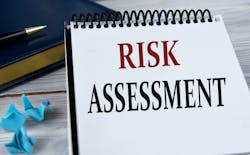It’s estimated that around 2,200 cyberattacks happen every day, putting millions of people’s data at risk. When companies store vital information in the cloud, keeping that data secure can certainly seem daunting. But this can feel near impossible for small businesses in particular, which may lack the resources to hire increasingly expensive cybersecurity talent and/or invest in cloud security strategies in the same ways their enterprise counterparts have.
To make matters worse, the average data breach in the United States costs $9.44M, a price most businesses can’t stand to lose - regardless of their size, industry, or the macroeconomic circumstances in which they’re operating. As businesses look to safeguard their information against risk, it’s imperative to look to the latest technology for assistance, especially if they lack extensive internal IT infrastructure.
Understanding Risk in a Cloud Environment
While the cloud offers many incredible advantages, like scalability, loss prevention, and the opportunity for increased collaboration, a primary concern for businesses is how to remain on top of threats lurking in these environments. Businesses that rely on the cloud to store their data need to remain constantly vigilant of potential threats. Building a strong defense against cyberattacks begins with confronting these risks and understanding exactly what’s at stake should a successful attack transpire.
Sixty percent of small businesses fold within 6 months of a cyberattack. While small businesses are targeted more frequently, large-scale enterprises can just as easily have major security vulnerabilities that go undetected. With millions of people’s data at risk, it’s no wonder why the majority of businesses that suffer a ransomware attack decide to pay the ransom, an act that can cost a company hundreds of thousands of dollars.
It should be understood that investing in cybersecurity proves to be far less expensive than shelling out funds to retrieve ransom information or repair systems after a data breach. To avoid ignoring potential areas of risk in cloud infrastructure, small businesses and large enterprises alike urgently need to allocate funds to bolster their cybersecurity posture. Here are a handful of initiatives business leaders should prioritize as they work to keep their cloud data safe.
Complete a Cyber Risk Assessment
One of the first steps toward fortifying a business against cybercriminals is conducting a total business risk assessment. This process can prove useful for companies that:
● Have recently adopted new cloud technology
● Are preparing for an audit
● Recently completed a merger or acquisition
● Want to avoid bad press and potential legal issuesA risk assessment serves as a comprehensive evaluation of your company's IT infrastructure and processes. When completed proactively, it can prevent security breaches or loss of data by identifying potential risks and vulnerabilities ahead of time.
Once you’ve decided to move forward with an assessment, it’s crucial to consider the professional security risk assessment consultant you want to hire. Ensure that the firm has a strong understanding of ever-changing compliance requirements so they can help your company stay up to date with the latest regulations.
But what does the actual assessment look like? Over the course of 4-6 weeks, a virtual Chief Information Security Officer (CISO) will evaluate your business, its risk exposures, and all security controls it currently has in place. This process requires the CISO to gather data about your company related to the technology you invest in, user access levels, and any other factors that may impact security such as partnerships or consumer controls.
Once the virtual CISO has full visibility into your company’s level of risk, they’ll supply you with a detailed report explaining your current security standing and surface any weaknesses that may impact your company down the line. The firm can then detail any areas that need your attention, whether those be technological shortcomings or potential manual risks.
The firm should work in tandem with your company’s IT leadership to determine which items need to be prioritized. From there, you and your team can create an action plan to address current and future threats best and reduce the chance of a security breach.
Conduct a Security Domain Assessment
In order to ensure your company is fully compliant with standards and regulations to protect customer data, you may decide to outsource a security domain assessment. A domain assessment is a comprehensive evaluation of the security measures and controls within a specific domain or area of your organization’s IT infrastructure.
Similar to a cyber risk assessment, a domain assessment identifies vulnerabilities, weaknesses, and non-compliance with any security policies or regulations like CMMC and HIPAA. When conducting a security domain assessment, your outsourced partner will examine factors like:
● Access controls
● Network security
● Data protection measures like encryption mechanisms and classification policies
● Incident response
● Physical security controls
● Compliance with internal and external security policies, procedures, and regulations
● Employee security awareness and behaviors
The combined power of a cyber risk assessment and security domain assessment will ensure your business is aware of not only the vulnerabilities and risks posed by your IT infrastructure but also any issues with voluntary and/or regulatory compliance. Armed with this information, your IT team can quickly get to work tightening your organization’s security posture to affirm it’s well-equipped to fend off potential cyberattacks.
Additional Cybersecurity Best Practices
Unbelievably, some of the most effective security practices are both easy to implement and relatively inexpensive. Simple techniques like requiring 2-step authentication to access sensitive internal accounts and information can strengthen your defenses against cyberattacks.
Additionally, business leaders should consider utilizing programs that educate employees on the dangers of phishing attacks and other cyber threats. Improving awareness around the different types of cyberattacks and how employees can play a role in preventing them will go a long way here.
Proactivity is Key
All told, implementing cybersecurity tools will prove hugely beneficial to organizations of all sizes in today’s treacherous climate. Businesses that choose to proactively assess their current systems and strategies will be able to mitigate the risk of potential cyber breaches, ensure their company remains compliant with any industry or regional regulations, and gain a competitive edge over those who fail to take proactive measures.
Running a secure business while storing data in the cloud may feel ominous but taking advantage of the tools and procedures available, like risk assessments and security domain assessments, will safeguard proprietary and customer data against bad actors.
About the Author

Pete Hoff
Pete Hoff, Global VP, Security and Managed Services, CISO at Wursta
Peter Hoff is a technology industry leader with more than twenty years of experience in the field. Pete brings a wealth of experience to his Global VP, Security and Managed Services, CISO role at Wursta across the e-commerce, education, and financial services industries. Prior to entering the private sector, Pete was a member of the United States Air Force, where he was a senior airman focusing on managing technology systems. In his role as Global VP, Security and Managed Services, CISO at Wursta, Pete helps hundreds of organizations maximize their use of the cloud by strengthening their security postures.


